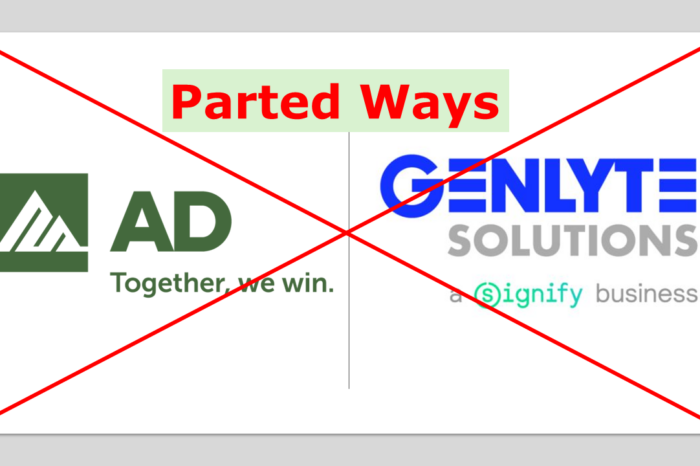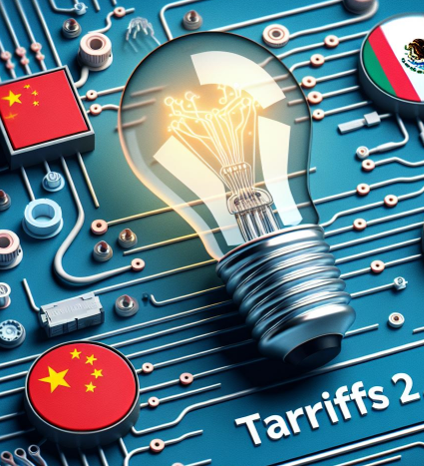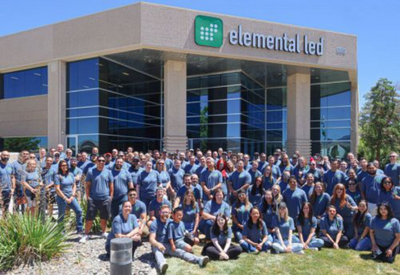Bye Bye Rebate Dollars?
 Over the past few years distributors have financially benefited from a confluence of macro-industry events to achieve high net profit. An element of this is their rebate dollars.
Over the past few years distributors have financially benefited from a confluence of macro-industry events to achieve high net profit. An element of this is their rebate dollars.
And recently a few people have commented, and I paraphrase, “distributors have seen the peak of their rebate dollar earnings for at least the next couple of years.”
Having started my career in the electrical industry with what is now known as IMARK, I am very familiar with the rationale, philosophy and development of rebate dollars but let’s admit, all have benefited from price increases. Manufacturers have increased their profits. Distributors have generated more rebate dollars due to price increases and hence their net profits.
Most, if not all, rebate programs have two elements. Every one has a growth element. Exceed prior year and get either a rebate or a higher payout. Most also have a retention element so that the distributor earns a percent for “existing” business. Inflation / price increases have enabled distributors to enjoy the benefits of the growth element “rather easily.”
But, unless you believe that inflation will continue, commodity prices will go up (quickly), and price increases will continue and help the electrical industry reach further sales peaks, the reality is, in thew words of Tyrone Davis “what goes up must come down.”
The past two years distributors have had their net profit increase significantly. There were some one-time benefits (PPP, the Earned Retention Credit which wasa part of the CARES Act) and the 20+% sales increase that came from the recovery as well as price increases.
But what happens if the economy slows? Contracts? Price increases moderate? No more artificial government funding?
One thing we do know is that a percent on a smaller dollar amount, let alone a percent on a smaller growth amount (for growth-oriented rebate structures) translates into lower overall rebate earnings.
Recently I was speaking with Greg Smith, president of G Group Holdings. Greg owned a small electrical distributor many years ago and then was EVP for Granite City Electric. Very knowledgeable about rebates, negotiating with suppliers, and distributor profitability. He shared his thoughts:
Has distribution seen the peak of manufacturing rebate income?
“For many Electrical Distributors, volume rebate income, as reported in the 2021 NAED PAR report (2020 results), can account for 40-60% and even higher of their net profit or EBIT, Earnings Before Interest, and Taxes. Since the initial Covid shock in early to mid-2020, Many distributors have seen a significant increase in their EBIT; a sampling of distributors realized a significant contribution coming from an increase in volume rebate income.
Over the past few years, distribution has realized significant rebate income growth; most of this growth can be attributed to macroeconomic conditions that have increased demand and driven inflation skyward.
- Increased money supply
- Increased demand
- Supply chain shortages
- Increased cost to produce
- Raw material shortages
- Demographic and changing workforce
The combination of the macro conditions above has created what I have been referring to since Q4 2020 as a Black Swan Profit Event.
Cost-push inflation increases prices when the cost of wages and materials goes up. An example is lumber, as lumber is generally instrumental in homebuilding. When the cost of lumber spiked as much as 400% in 2021, it impacted housing prices resulting in inflation and slowing housing starts. Another example is copper, which depending on your product and customer mix, can account for at least twenty (20) percent of your total revenue. In April 2020, copper was $2.26; in April 2021, it was $4.17; in February 2022, it was $4.48. A 98% increase in COGS in less than two years. Fortunately, it has settled down a bit; as of the writing of this article, it is down to $3.52; however, it is still a 55% increase from early 2020, and anyone’s guesses what direction it goes, with the onset of a possible looming recession.
Interestingly, in August 2008, copper was at $3.15; through the rest of 2008 and 2009, the average price was $2.24 with a low of $1.28. Rolled Steel followed suit at the beginning of the pandemic cold; rolled Steel was trading at around $212.90; it quickly jumped to $245 in December 2020, to a peak price of $711.61 in November 2021, a whopping 234% increase! It is starting to decline with June prices around $563, that still a 164% increase over Q2 of 2020. Inflation has triggered significant growth in rebate income.
One of the bell weather recession indicators is two-quarters of negative GDP growth. In the first two quarters of 2022, the economy shrank, and Q2 shrunk 0.9%, which historically would indicate the start of a recession.
Indications point to a slowing economy as inflation shows no sign of slowing anytime soon. For those of us old enough (seasoned) to be in business like I was in the early to mid-eighties when inflation was out of control and Line of Credit interest was 17%, you realize it is not business as usual or business as you have enjoyed it, especially over the last couple of years.
As we think about volume rebate income as it is applied toward enterprise value or EBIT, we realize any income reduction has a significant negative impact on a company’s valuation. Especially when considering your business valuation in a sale environment, the negative impact is compounded by a multiple, usually over five (5).
Expected revenue decline and manufacturers changing the rules and managing their rebate programs tighter will undoubtedly negatively impact your volume rebate income and potentially your net profit, percentage-wise, over the next twelve to twenty-four months.
I believe distribution valuations are at their peak, at least for the foreseeable future. If you don’t have a succession plan, are unwilling to invest to stay competitive in this VUCU environment, and are thinking about your exit strategy, now may be the time. EBIT for most companies is at record levels.
If you are interested in having a confidential conversation to explore options, don’t hesitate to contact me at gregory-smith@ggroupholdings.com or call me at 617-851-8258.”
Opportunities
Greg and I have worked together for many years … he was a client for a number of years and we’ve most recently collaborated with distributors to conduct business valuations, recommend pricing and operational enhancements and, concurrently, develop growth strategies. This three-pronged approach enables small to mid-sized distributors the opportunity to consider options to either sell now, improve the profitability of their business and position for sale or improve the profitability and grow their business (and maybe sell later). Based upon our industry relationships, we can also facilitate introductions to assist a business being sold.
With rebates being such a driver of distributor profitability, we’re also hearing of distributors who would like to sell albeit assuming high net profit will continue … and asking for “high” multiples. The reality is that strategic buyers are smarter.
Further, as we head into 2023 …
- Distributor 2023 goals will be based upon 2022 performance, making them more difficult to achieve.
- With distributor profitability significantly dependent upon rebates, distributors will also need to consider how to improve internal communications on which lines to support … at the sales level and which to actively market to drive demand. From a manufacturer viewpoint, this makes the program more effective as it helps “move the needle.”
- Manufacturers will re-evaluate the structure of their rebate programs and perhaps seek ways to adjust for “unusual” price increases.
- Manufacturers will want their programs to be more performance / growth oriented.
- Marketing groups will need to be negotiation masters on behalf of their members to mitigate slippage or percent
What do you think … have we reached the peak of rebate earnings for the next couple of years or will they grow as a percent of distributor net profit AND, more importantly, in dollars?























